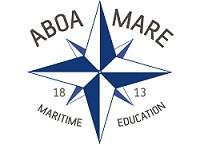I recently participated in the Lessons Learned workshop for Polar Code training programs in Buenos Aires, Argentina, from 31 October to 3 November 2023.
The workshop was attended by 25 people from 14 countries, including instructors, regulators, and ship officers. The program comprised presentations, group discussions, and field trips.
One of the main points was the IMO model courses 7.11 and 7.12 (Basic & Advanced Training for Ships Operating in Polar Waters), how the model courses have been implemented and executed, the use of instructors and simulation, and the use of online training methods. They were generally considered sufficient but could, of course, be improved still.
Other points that were discussed considered the upcoming review of the STCW Code and Convention, which gives the possibility to also improve on the Polar Code regulations. The possibility to establish the Polar Code as a stand-alone regulation was discussed and considered a worthwhile proposition. As of today, the Polar Code is implemented through amendments to other Codes, such as MARPOL and STCW.
After three days of work, the last day was used for preparing a document for the development of the Polar Code, ending in ten recommendations.
There were some recommendations that were harder to agree on. One of these was the level of expertise that the Polar Code instructors should have. On the other hand, all delegates unanimously agreed that all crew members on ships trading in the polar areas should have specific training, not just the deck officers, which is the current requirement.
The recommendations are not yet published and will be delivered to IMO for further deliberation in early 2024. Hopefully the views of the expert workshop will be considered in the future.
During the visit, I found that it was easy to be a Finn in the workgroup, everybody was well aware of the Finnish history and current know-how in ice navigation and icebreaking. Many interesting discussions cropped up on the subject and I almost sold an icebreaker, the only problem was that the presumptive buying country did not have the money! We also visited the Argentinian icebreaker Almirante Irizar, which was built in Finland in 1978, a fact that I, of course, pointed out to the others. I also noted that on board the icebreaker, the entire crew carried Abloy keys!
And as a Finn, it was also easy for me to discuss modern ice-going ships and icebreakers; when talking about the ship design, engines, propulsion, navigation equipment, and so on, the other delegates quickly realised that all these are (in almost all cases) Finnish products!
The local RCCL travel bureau also featured a Finland-built ship, the largest cruise ship in the world, which, incidentally, has been modelled into a simulator ship model by Aboa Mare, and we have trained the seatrial crews and the RCCL crews in our simulators. However, I refrained from pointing this out to my fellow delegates, I think that would have been taking it a bit to far.
I sincerely thank the IMO, the Argentinian Navy, Transport Canada for the arrangements during the workshop, as well as Aboa Mare and the Finnish Foreign Ministry for making my trip possible.

